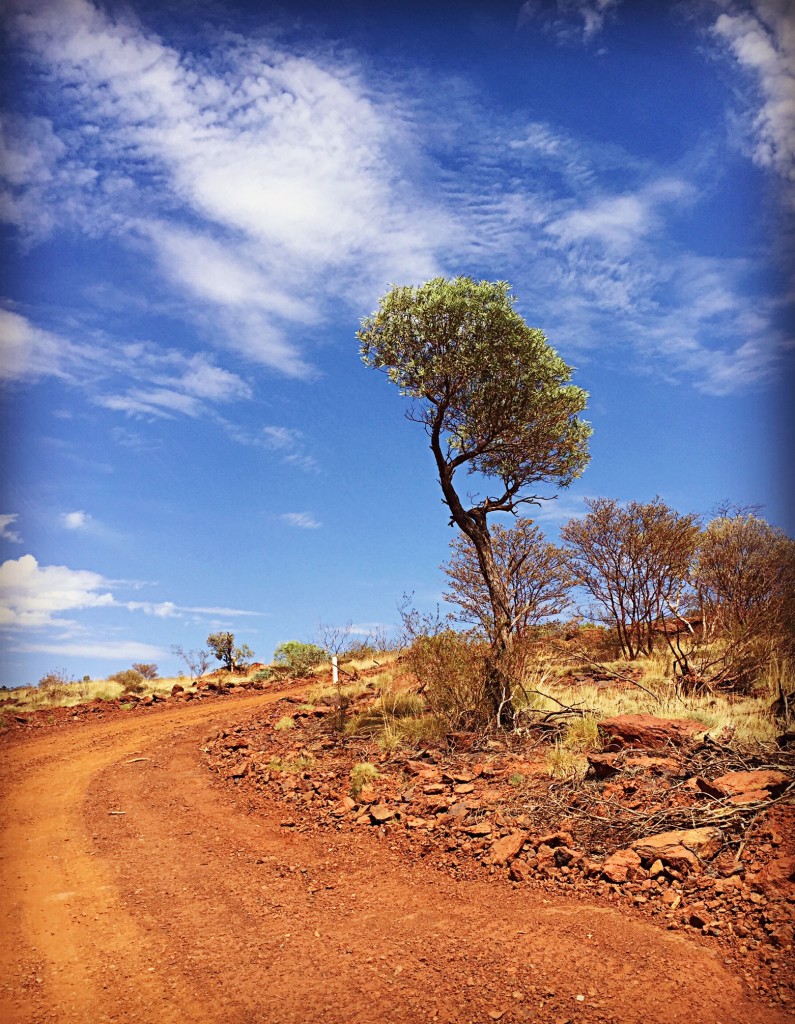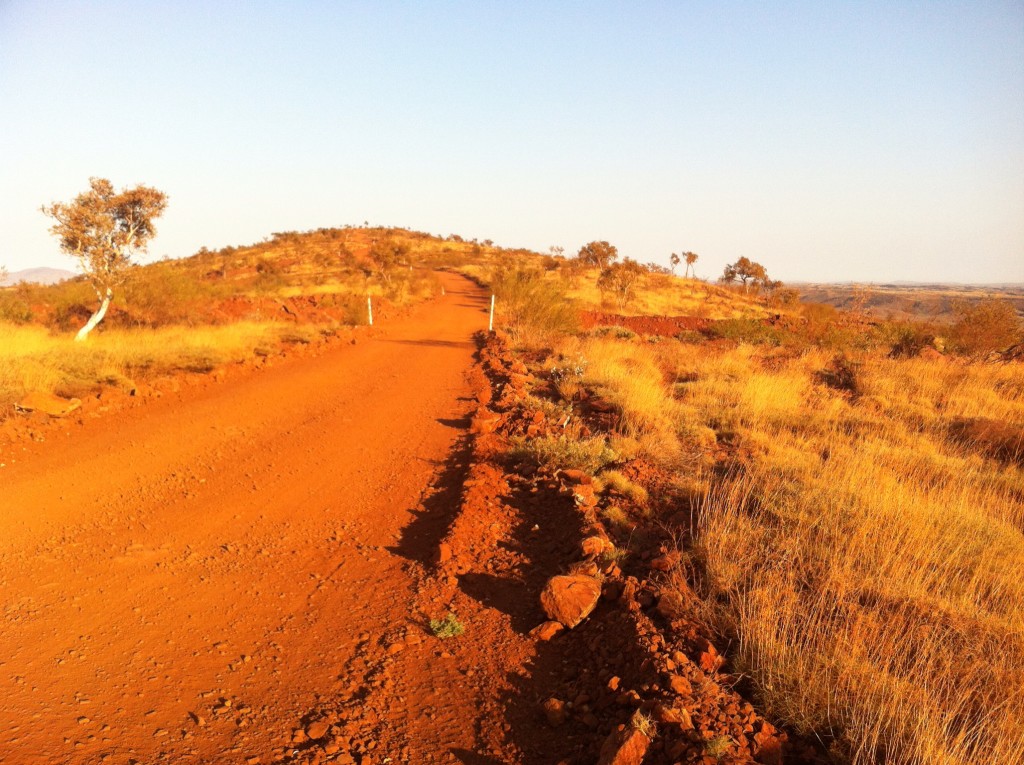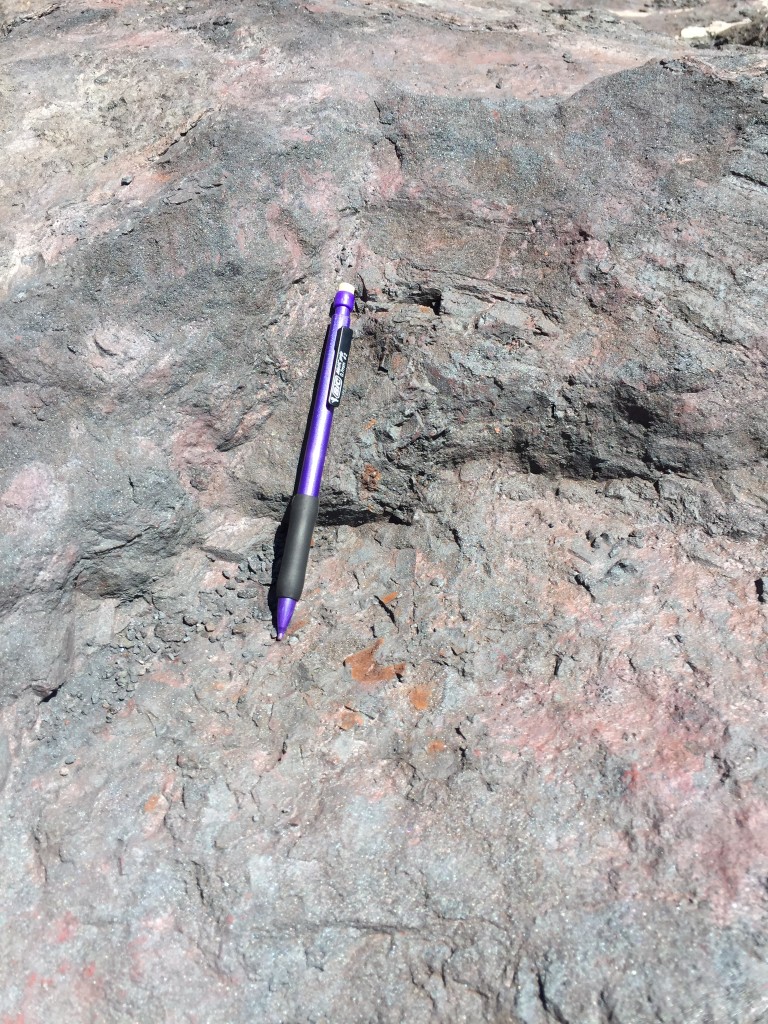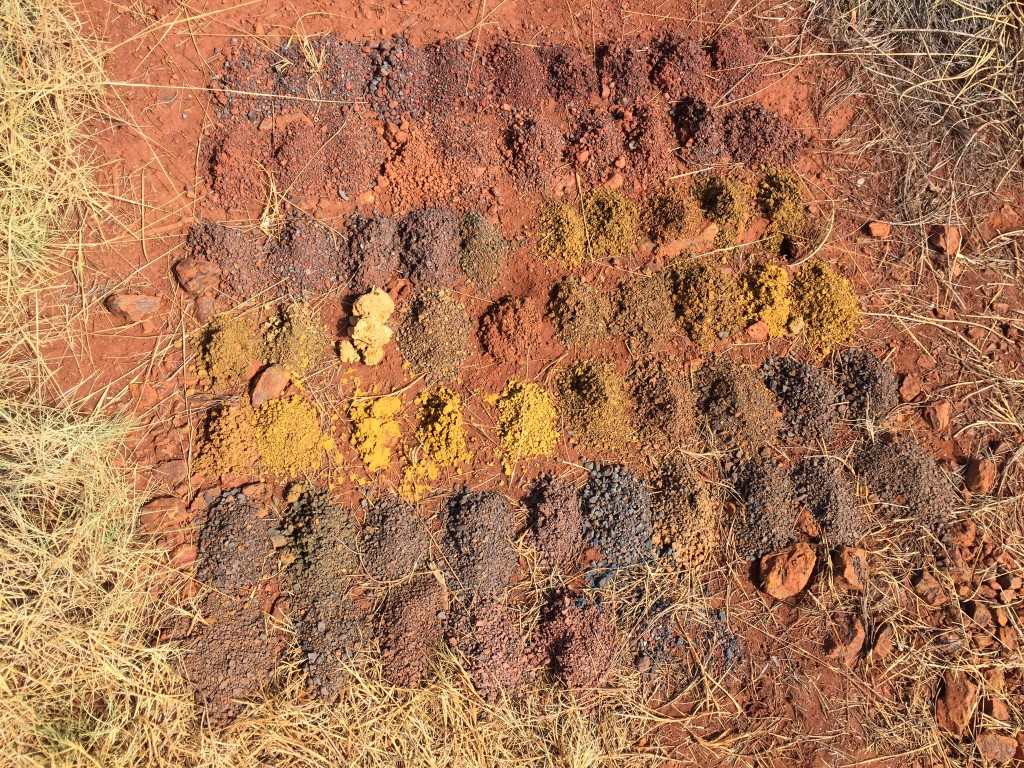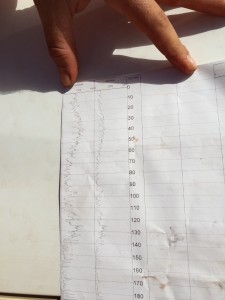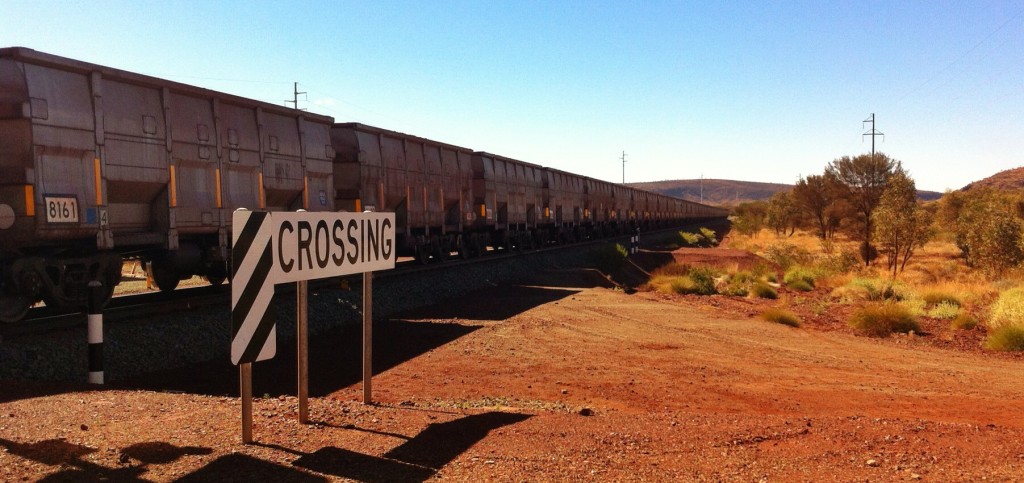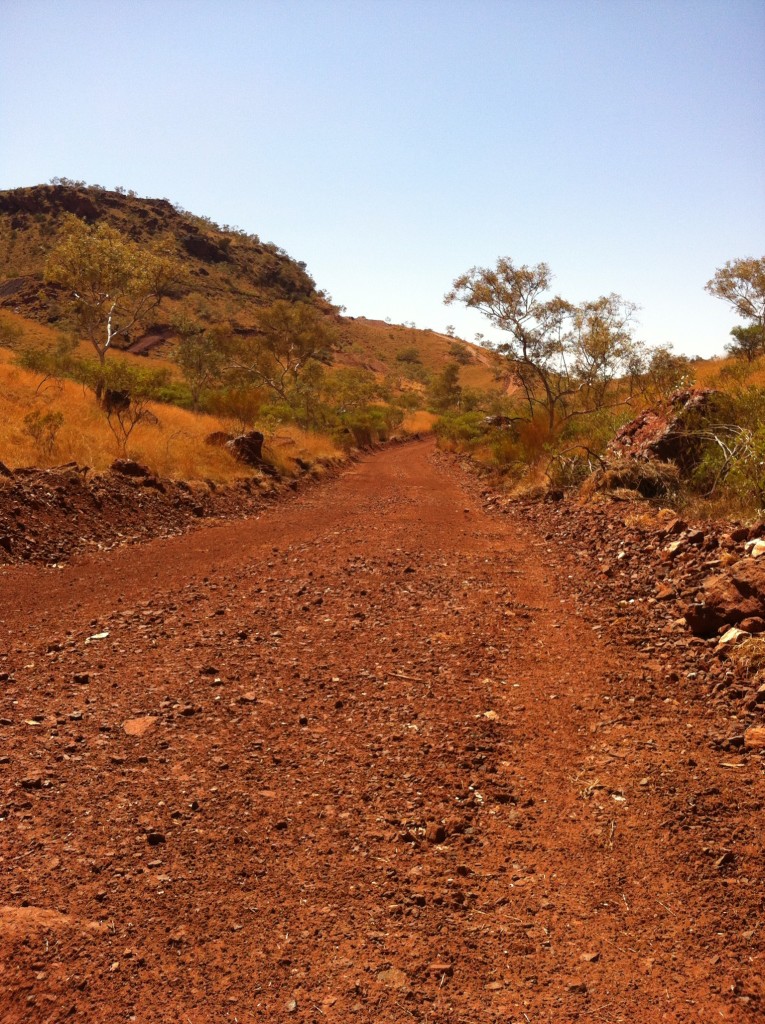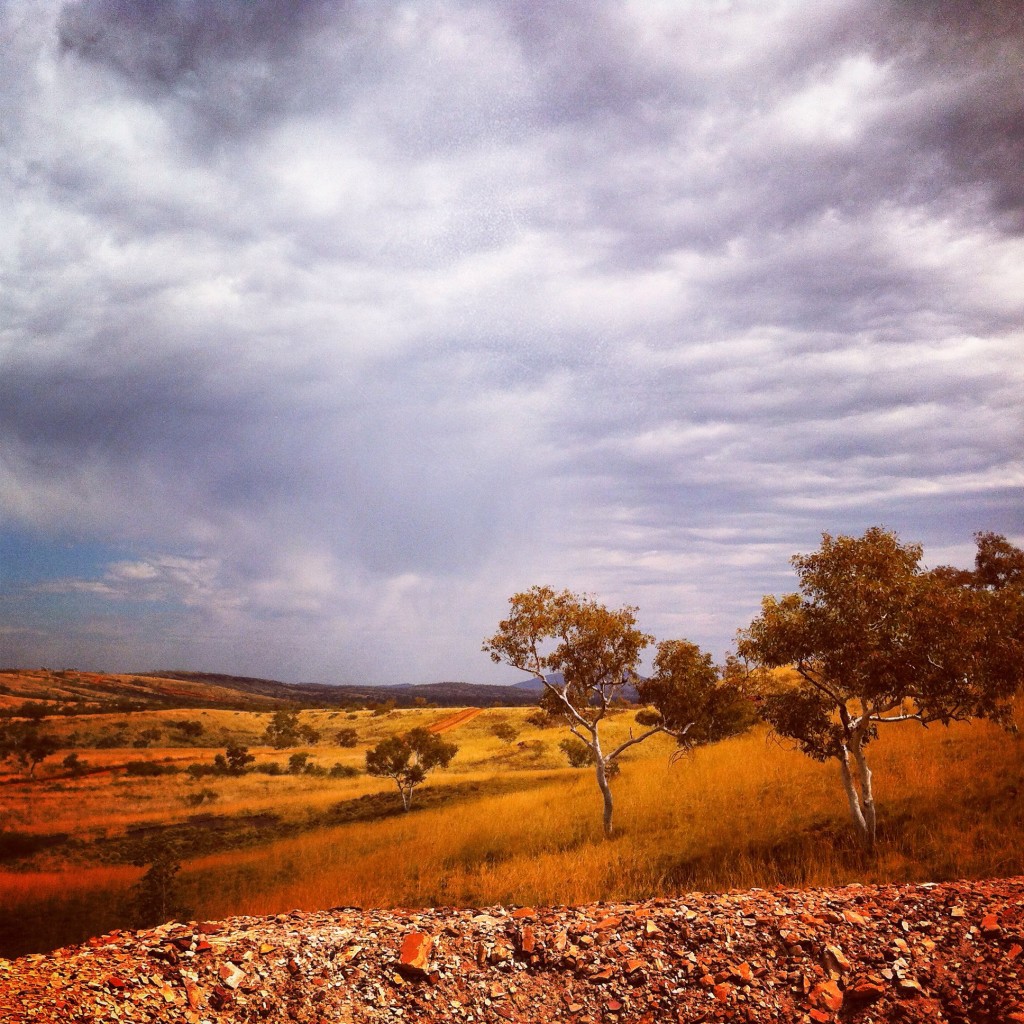Originally from the UK, Lisa is an exploration geologist working in northern Western Australia. You can read more about her adventures here.
The Pilbara region of north-western Australia, approximately 1,100 km north of Perth, is one of the world’s major iron ore provinces. Over 500 Mt (millons of tons) are exported annually from Western Australia’s northern ports after travelling hundreds of kilometres by rail from the state’s red interior, much of it bound for China.
The Hamersley Range is situated at the southern edge of the Pilbara craton and consists of Archaean-Palaeoproterozoic volcanics, metasediments and, of course, banded iron formation (BIF). The major ore-bearing stratigraphic units are hosted within the Brockman, Marra Mamba and, to a lesser extent, the Boolgeeda Iron Formations. These are thick BIF sequences interbedded with minor shale bands, which contain the deleterious elements of the ore product, mainly SiO2, Al2O3 and P.
As well as the mining industry the Pilbara region and its valuable BIFs host Karijini National Park, the second largest national park in Australia. The park is known for its gorges, formed by seasonal rivers eroding through the BIFs, waterfalls and swimming holes. Due to its relative isolation the chances are that you can have an entire swimming hole to yourself, perhaps with the occasional rock wallaby looking on.
However it is the economic potential rather than natural beauty that brings most people “up north”. Though there are different types and varieties of iron ore, depending on mineralogy, metallurgical properties and provenance, the most prized is lumpy haematitic ore, grading up to 68% Fe. The largest occurrences of this often deep-seated, high-grade material can be found in the mines of Mt. Whaleback and Mt. Tom Price, run by two of the world’s biggest mining companies, BHP Billiton and Rio Tinto, respectively.
There are three main types of iron ore: bedded, channel, and magnetite. Bedded iron ore forms the highest-grade material and forms the majority of the exported product. As well as the aforementioned microplaty haematite ores, martite-goethite and martite-ochreous goethite (limonite) are typical mineral assemblages of the bedded ore. As a general rule the Marra Mamba and Boolgeeda ores tend to have significantly higher limonite content than the Brockman units.
Channel iron deposits consist of vast accumulations of Fe pisoids (concentric accretions of goethite around a haematite core) formed in a fluvial environment. These channels, such as the Yandi and Robe River deposits, have remarkably consistent geochemistry. Metallurgically, their high fines (<2 mm) content means they are valuable as a sinter product for steel mills. This desirability, along with relatively low strip ratios, means channel deposits can be among the most profitable of mines.
Magnetite mines are the least common and have a relatively low Fe content. Most magnetite product is beneficiated to produce Fe pellets prior to export. Though this produces a high-quality lump product for blast furnaces, the additional refinement cost prior to export means that this is not a common strategy for iron ore producers.
Genesis of the bedded iron ore deposits is disputed. In broad terms, the consensus is that supergene alteration formed the majority of the martite-goethite deposits, with meteoric fluids removing the silica component of the BIF and altering the magnetite to a martite, a form of haematite. Ochreous goethite is formed as part of the supergene enrichment process and is a more hydrated form of iron ore.
The less common but highly prized microplaty haematite is theorised to have formed with a hypogene influence. Intrusives from the Mt Sylvania Inlier (Mt Whaleback) and dyke swarms around Mt Tom Price, coupled with complex faulting, are posited to have provided fluids to form microplaty ore.
Exploration of bedded iron ore deposits is driven by structural understanding of the regional stratigraphy to determine where any faulted/folded/buried prospective iron formations may occur. During drilling, the sub units within the iron formations can be recognised through using downhole gamma traces: shale units containing radioactive elements emit more radiation than the surrounding BIFs and so have a higher profile and a distinctive pattern, where not influenced by folding and faulting.
Following the steady decline of iron ore prices through 2014, companies are scaling back on capital costs and much of current exploration is focussed on resource definition of near-mine deposits. However there remains high potential throughout the Pilbara for significant deposits buried under Quaternary cover or, if hypogene genesis theories are correct, beneath thick sequences of unmineralised and seemingly unprospective BIF.
You can read more about Lisa’s travels at scratchingtheitchblog.com.
![]() This work is licensed under a Creative Commons Attribution-NonCommercial-ShareAlike 4.0 International License.
This work is licensed under a Creative Commons Attribution-NonCommercial-ShareAlike 4.0 International License.

